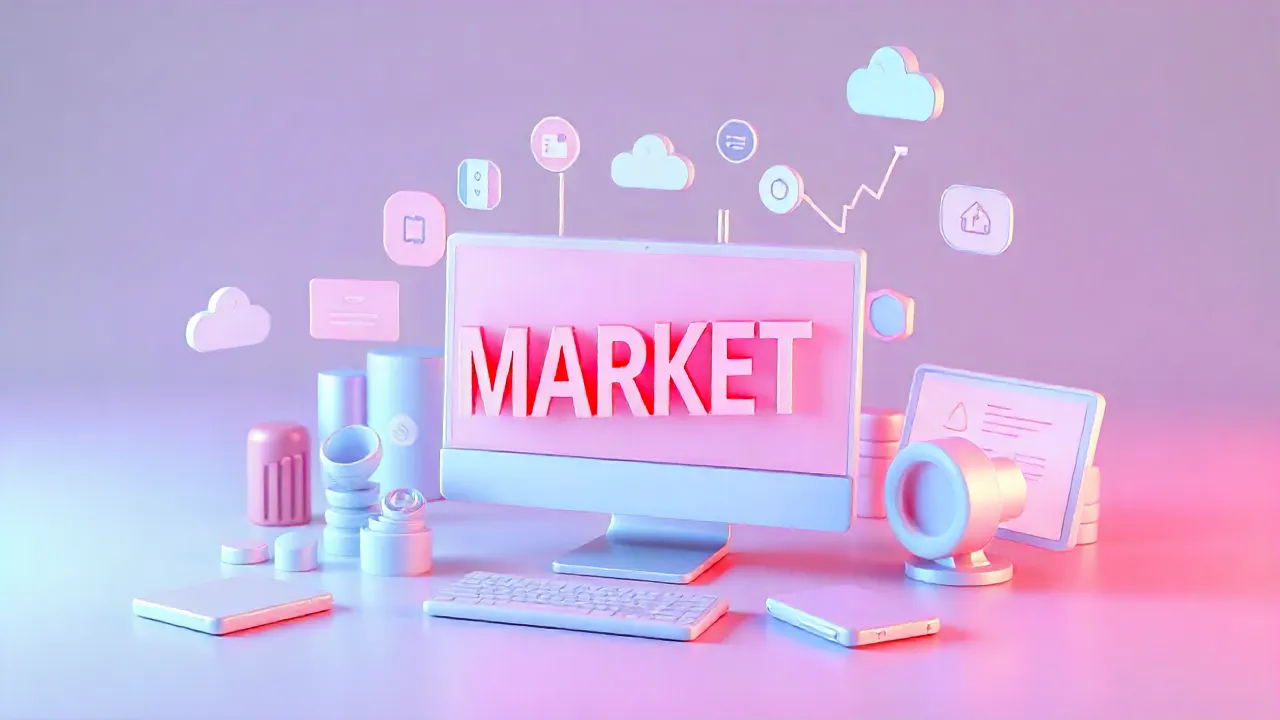Picture this: I’m sitting in a marketing meeting, and my co-workers are raving about how AI chatbots are engaging with customers better than our best sales reps. Feeling slightly uneasy, I decided to speak up, sharing a story about how my grandmother still won’t buy a vacuum without talking to a real person. This conversation sparked my curiosity on how far we’ve come—and how far we might fall—if we lean too heavily on AI in our marketing.

The Double-Edged Sword of AI in Marketing
AI in marketing is like a shiny new toy. It’s exciting, it’s powerful, and it can do things we never thought possible. But, just like that toy, it comes with a few strings attached. We need to talk about the double-edged sword that is AI in marketing. It’s not all rainbows and butterflies; there are some serious risks lurking in the shadows.
1. Unmatched Efficiency in Data Processing and Targeting
Let’s start with the good stuff. AI can process data faster than I can finish a cup of coffee. And trust me, I drink a lot of coffee. With AI, marketers can analyze customer behavior, preferences, and trends in real-time. This means we can target the right audience with the right message at the right time.
-
Imagine sending personalized emails to customers based on their past purchases.
Or creating ads that actually resonate with people.
That’s the kind of magic AI brings to the table. It’s like having a superpower for marketers. But here’s the catch: while we’re busy marveling at the efficiency, we might overlook the human aspect.
2. Risks of Dehumanizing Customer Interactions
Now, let’s talk about the dark side. Have you ever received a robotic response from a customer service chatbot? It’s like talking to a brick wall. Sure, AI can handle basic inquiries, but what happens when a customer needs empathy or understanding?
When we rely too heavily on AI, we risk turning our interactions into cold, automated exchanges. This can lead to frustration and alienation. Customers want to feel valued, not like just another data point. So, how do we strike a balance?
3. Potential Loss of Emotional Connection with Customers
Here’s where it gets tricky. AI can analyze data and predict trends, but it can’t feel. It can’t understand the nuances of human emotions. Think about it: when was the last time a machine truly understood your feelings?
When we prioritize automation over genuine connection, we risk losing the emotional bond that keeps customers coming back. It’s like trying to hug a robot; it just doesn’t feel the same!
-
We need to remember that behind every purchase, there’s a person with feelings and emotions.
Human-centered marketing should be our guiding light.
4. Dependence on Algorithms Over Intuition
Lastly, let’s discuss our growing dependence on algorithms. Sure, they can predict what customers want based on past behavior. But what about intuition? What about creativity? Sometimes, a gut feeling can lead to the most innovative marketing campaigns.
When we start relying solely on AI, we risk stifling our creativity. We might miss out on those “Aha!” moments that come from human insight. It’s like cooking with a recipe: sure, it’s great to follow instructions, but sometimes you just need to throw in a pinch of this and a dash of that!
So, what’s the takeaway here? AI in marketing offers unmatched efficiency, but we must tread carefully. We can’t let the algorithms take the wheel entirely. We need to blend automation with the human touch.
In the end, it’s about finding that sweet spot where AI enhances our marketing efforts without overshadowing the human connection. We can embrace AI, but let’s do it ethically. Let’s keep our marketing human-centered and ensure that we don’t lose sight of what truly matters: the people behind the data.
Ethical Considerations and AI Governance
As we dive into the world of AI in marketing , it’s crucial to pause and ponder: are we steering this ship ethically? With every advancement in technology, ethical considerations become more pressing. It’s like driving a car without brakes; you might go fast, but the risk of crashing increases significantly. So, let’s break down some of the key ethical considerations and governance issues surrounding AI.
The Need for Ethical Guidelines in AI Deployment
First off, we need to talk about the ethical guidelines for deploying AI. Why? Because without them, we’re like kids in a candy store—excited, but likely to make poor choices. Ethical guidelines serve as our compass, helping us navigate the murky waters of AI technology.
-
They ensure that AI is used responsibly and doesn’t cause harm.
-
They help build trust with consumers, who are becoming increasingly aware of how their data is being used.
-
They can prevent the misuse of AI technologies, which can lead to discrimination or exploitation.
Imagine a world where AI is used to manipulate consumers without their knowledge. Scary, right? That’s why we need robust ethical guidelines that are not just suggestions but requirements.
Impacts of Biased Algorithms on Target Demographics
Now, let’s address a huge elephant in the room: biased algorithms. These are like the bad apples in a barrel. When AI systems are trained on biased data, they can perpetuate and even amplify existing inequalities. For instance, if an AI system is trained on data that predominantly includes one demographic, it may not serve others well.
This can lead to:
Exclusion of certain groups from targeted marketing campaigns.
-
Reinforcement of stereotypes that can harm marginalized communities.
-
Loss of potential customers who feel misrepresented or ignored.
We must ask ourselves: how can we ensure that our AI systems are fair and inclusive? One answer lies in diversifying the data sets used for training. After all, variety is the spice of life, right?
Importance of Transparency in AI-Driven Marketing
Next up is the importance of transparency in AI-driven marketing. Think of it as a relationship; without trust and open communication, things can get rocky. Consumers deserve to know how their data is being used and how AI influences the marketing they encounter.
Being transparent can:
Enhance consumer trust in brands.
Encourage responsible use of AI technologies.
Empower consumers to make informed decisions.
Imagine receiving personalized ads without any clue how they got there. It feels invasive, doesn’t it? By being transparent, we can create a more human-centered marketing approach that respects consumer privacy.
Discussion on Regulatory Frameworks
Finally, let’s not forget about the need for regulatory frameworks governing AI. Regulations can act as the safety net that catches us if we fall. They can help ensure that companies are held accountable for their AI practices. But here’s the kicker: regulations need to be adaptable. Technology evolves rapidly, and regulations must keep pace.
Some key points to consider include:
Establishing clear guidelines for data usage and privacy.
Creating standards for algorithm fairness and accountability.
-
Encouraging collaboration between tech companies, regulators, and consumers.
We’re all in this together, right? It’s about finding a balance between marketing automation and maintaining the human touch . The stakes are high, and we must tread carefully to avoid the pitfalls of AI dependence.
So, as we embrace the future of AI in marketing, let’s keep these ethical considerations at the forefront. After all, a little caution can go a long way in ensuring that technology serves humanity, not the other way around.
Striking the Perfect Balance: Humans vs. Machines

Ah, the age-old debate: humans versus machines. It’s like watching a boxing match, but instead of punches, we’re throwing around creativity, intuition, and algorithms. I mean, who wouldn’t want to see a human and an AI shake hands and agree on a marketing strategy? Let’s dive into how we can integrate AI with human intuition and creativity for a delightful hybrid marketing model.
Integrating AI with Human Intuition and Creativity
First off, let’s get something straight: AI is not here to steal our jobs. At least, not yet! Instead, it's here to *enhance* our capabilities. Think of AI as your trusty sidekick. You know, like Robin to your Batman. It can crunch numbers, analyze data, and predict trends faster than you can say “marketing automation.” But can it understand the nuances of human emotions? Not quite.
Imagine you’re crafting a marketing campaign. AI can analyze consumer behavior and suggest strategies based on data. But then, there’s that little thing called *human intuition*. You know, the gut feeling that tells you whether a campaign will resonate with your audience or not. It’s that spark of creativity that AI simply doesn’t possess. So, how do we strike the perfect balance?
Use AI for data-driven insights.
Let human creativity take the lead in crafting messages.
Combine both for a well-rounded approach.
By integrating AI’s analytical prowess with our creativity, we can create campaigns that not only attract attention but also connect on a deeper level with our audience.
Benefits of a Hybrid Marketing Model
Now, let’s talk about the benefits of this hybrid marketing model. Why should we even consider it? Well, here are a few reasons:
-
Efficiency: AI can automate repetitive tasks, freeing up our time for more creative ventures.
-
Personalization: With AI, we can analyze data to tailor messages that resonate with individual consumers.
-
Cost-Effectiveness: A hybrid model can reduce costs by optimizing campaigns based on real-time data.
By embracing a hybrid approach, we can leverage the strengths of both humans and machines. This allows us to create campaigns that are not only efficient but also resonate with our audience on an emotional level.
Anecdotes of Brands Successfully Merging the Two
Let’s take a moment to look at some brands that have successfully merged AI with human creativity. One notable example is Coca-Cola. They used AI to analyze social media trends and consumer preferences, but they didn’t stop there. They took those insights and created a campaign that felt personal and engaging. They understood that while AI can provide data, the *story* behind the brand needs a human touch.
Another example is Netflix. They utilize AI to recommend shows based on viewer habits. However, they also rely on human creativity to produce original content that resonates deeply with audiences. It’s a beautiful dance between data and creativity.
The Role of Empathy in Digital Marketing
Now, let’s not forget about empathy. In a world where everything is automated, empathy is our secret sauce. It’s what makes human-centered marketing so essential. When we market with empathy, we connect with our audience on a personal level. We understand their needs, desires, and pain points.
AI can analyze data and predict trends, but can it *feel*? Not really. This is why we need to be cautious about our dependence on AI. Sure, it can improve efficiency, but if we lose sight of the human experience, we risk alienating our audience. As the saying goes, “People don’t buy what you do; they buy why you do it.”
So, as we embrace AI in marketing, let’s not forget the importance of human intuition and empathy. The perfect balance is not just about efficiency; it’s about creating connections that last.
The Future of Marketing: Embracing AI Responsibly
AI in marketing is not just a trend; it’s a revolution. We’re standing at the edge of a new era where artificial intelligence can transform how we connect with customers. But wait! Before we dive headfirst into this digital ocean, let’s take a moment to consider the waves we might create.
Predictions on the Evolving Role of AI in Marketing
First off, let’s talk about predictions. What’s the crystal ball saying about the future of AI in marketing? Well, it’s a bit foggy, but here are a few insights:
-
Increased Personalization: Imagine receiving tailored recommendations that actually make sense. AI will allow us to analyze customer data and preferences to create highly personalized marketing experiences.
-
Enhanced Customer Insights: AI tools will provide deeper insights into customer behavior. Think of it as having a super-sleuth on your team, uncovering what makes your audience tick.
-
Automation of Routine Tasks: Marketing automation will take a giant leap. We’ll automate repetitive tasks, giving us more time to focus on creative strategies.
But, with great power comes great responsibility. How do we ensure we’re using AI ethically? That’s where the human touch comes in.
Exploring Future Applications of AI with a Human Touch
AI might be smart, but it lacks the warmth of human interaction. So, how can we ensure that our marketing remains human-centered? Here are some thoughts:
-
Empathy in AI: We need to program empathy into our AI systems. This means understanding customer emotions and responding appropriately. Yes, AI can analyze data, but can it understand heartbreak? Not yet!
-
Human Oversight: Always have a human in the loop. AI can assist, but it shouldn’t replace the human element. We need that personal touch to build trust.
-
Creative Collaboration: Use AI as a tool for creativity, not a crutch. Let’s brainstorm ideas together, combining human creativity with AI’s analytical power.
Building a Roadmap for Responsible AI Adoption
Now, let’s get down to brass tacks. How do we adopt AI responsibly? Here’s a simple roadmap:
-
Define Clear Objectives: What do you want to achieve with AI? Set clear goals to guide your strategy.
-
Assess AI Risks: Understand the potential risks of AI dependence. What happens if the system fails? Have a backup plan.
-
Implement Ethical Guidelines: Create guidelines that ensure ethical AI usage. This includes transparency, accountability, and fairness.
-
Monitor and Adjust: Regularly review your AI systems. Are they working as intended? Adjust as necessary.
Community Engagement and Feedback Loops
Finally, let’s not forget about community. Engaging with your audience is crucial. Feedback loops can help us refine our strategies. Here’s how:
-
Solicit Feedback: Ask your customers what they think about your AI-driven marketing. Their insights can be invaluable.
-
Build a Community: Foster a community around your brand. Engage with customers on social media, and listen to their needs.
-
Iterate Based on Feedback: Use customer feedback to improve your AI applications. This creates a cycle of continuous improvement.
In conclusion, the future of marketing with AI is bright, but it requires a careful balance. We must embrace AI responsibly, ensuring that ethical considerations guide our path. As we explore the potential of AI, let’s remember that it’s not just about automation. It’s about connecting with our customers in meaningful ways. After all, marketing isn’t just a transaction; it’s a relationship. So, let’s keep that human touch alive in this AI-driven world. Together, we can navigate the future of marketing while keeping our values intact. Who’s ready to dive in?



